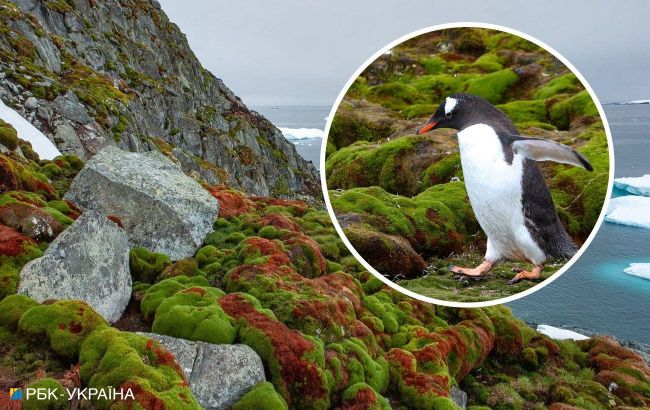Ukrainian polar explorers showcase summer in Antarctica
 Photo: Summer in the Antarctica (collage by RBC-Ukraine)
Photo: Summer in the Antarctica (collage by RBC-Ukraine)
Antarctica is associated with snow and ice, frost, and icicles. But now it is summer there with positive temperatures, so the Arctic vegetation is starting to make its way, according to the National Antarctic Scientific Center.
At this time, the air temperature in the Antarctic hovers around 0℃. This summer, the maximum heat was on January 3, when the temperature reached 5℃. The coldest day was January 12 - the temperature dropped to -1.2℃.
The polar explorers note that in such weather, the snow melts and the Antarctic turns green, as unique Antarctic vegetation emerges from the white cover.
"There are two types of vascular plants among the local flora. These are the Antarctic pikeweed and the pearlweed. Pike's-ear is a relative of our oats, and pearlwort belongs to the clove family. In addition to them, there are also about 100 species of mosses and lichens in the Antarctic," the scientists say.
Ukrainian polar explorers are studying how climate change affects Antarctic vegetation. To do this, they keep records of bushes and their distribution.
"In addition to climate change, penguins help Antarctic plants grow. After all, it is they who generously fertilize rocks and narrow areas of soil, making them suitable for further landscaping," the experts add.
Scientists even use drones to map vegetation.
This Antarctic season, research on the Antarctic's green cover is just beginning.

